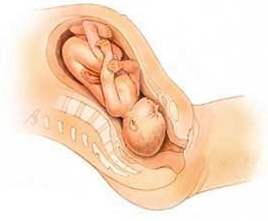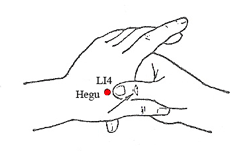 Labor can be a painful situation no matter what position your baby is in. However, with baby back to back or in other words, in “occiput posterior” position, there can be a significant amount of back pain. Occiput posterior position is when your baby's spine is lying against your spine and his face is looking towards your tummy. This also makes delivery more complicated because the baby is unable to tuck the head and chin down to make passage easily. Babies can be turned to their front facing your back, which is the optimal position for labor. This article will explain more about the ways to change baby positions in womb and what to do in delivering a back to back baby.
Labor can be a painful situation no matter what position your baby is in. However, with baby back to back or in other words, in “occiput posterior” position, there can be a significant amount of back pain. Occiput posterior position is when your baby's spine is lying against your spine and his face is looking towards your tummy. This also makes delivery more complicated because the baby is unable to tuck the head and chin down to make passage easily. Babies can be turned to their front facing your back, which is the optimal position for labor. This article will explain more about the ways to change baby positions in womb and what to do in delivering a back to back baby.
How to Tell If My Baby Is Back to Back
1. Palpation
When you go for a pregnancy check, your doctor will touch your abdomen to see what position your baby is in. Ultrasounds are usually stopped after the 20th week the baby is then big enough for doctors to feel the difference between the head and the rump.Your doctor or midwife can also check the size of the baby and if it has dropped down into your pelvis for delivery. The baby usually gets into position on or after the 34th week of pregnancy.
With the baby back to back position, your doctor will only feel an empty spot in the front of your belly, or even the knees or feet. The best way to tell is to have the same doctor to palpate your belly at each pregnancy check.
2. Self-Check
When you are undressed, look at yourself in the mirror. Look at your belly from the side and the front daily starting at the 34th week of pregnancy. If your belly looks rounded all the way from your ribs to lower pelvis, your baby is probably lying in the proper position for delivery.
If your belly looks fuller near your ribs and tends to have a dip down at the bottom, it could be a sign of baby back to back. Back to back baby will also cause more low back pain during the last week of pregnancy. Bowel or rectal pressure is another sign of back to back baby. On a good note, frequent urination is a good sign that your baby is front to back and in the right position.
How to Change Baby Position in Womb
There are a few reasons for different baby positions in womb. One is the way that you sit or lie down and another is the size and shape of your pelvis.
Try These Positions:
You can do the following positions several times a day to help your baby readjust:
- Sit straight up in a chair. Spread your knees and keep your feet on the floor. Lean forward and lower your abdomen between your knees.
- Sit on an exercise or birthing ball.
- Take frequent breaks from your desk at work and take a walk.
- Place cushions under your hips to keep them elevated when sitting.
- Kneel over pillows with knees separated and push your bottom downward.
- Crawl on hands and knees or rotate your bottom up and down.
- Use a body pillow when lying down and cross one leg over the pillow.
- When in a pool, allow yourself to float with your abdomen pointed downward.
Avoid These Positions:
- Leaning back in soft chairs
- Sitting with your legs crossed
- Deep knee bends
- Lying flat on your back
Exercises That Can Help Change Baby Positions in Womb:
There are a few exercises that can help rotate a baby that is in the posterior position. You can try getting on all fours and rocking the pelvis up and down (pelvic tilts) or getting on all fours and crawling across the floor. Do these exercises for 10 minutes and two times every day.
This video demonstrates the exercises you can do to get your baby into the best position for labor:
Birthing Techniques for Baby Back to Back
If you are nearing your delivery date and your doctor has told you the baby is facing back to back with you, there are still options to try. Nurses in the birthing unit can help you learn different ways to lie or move around that may assist your baby with turning. These techniques can also reduce back pain during labor. After your labor has started, you can try:
- Keep upright as long as you can because leaning back or reclining in bed can continue to trap your baby in a posterior position.
- Lean forward when you have a contraction. You can lean on a birthing ball or on your partner.
- Have your partner massage your lower back area with tennis balls.
- Get on all fours and rock your pelvic area up and down (pelvic tilts).
- Avoid epidural anesthesia. This relaxes certain muscles and can prevent the baby from turning. It can also increase the chances of interventions during delivery.
- If you lie down to rest during labor, only lie on the left side of your body. This will allow more room for your baby to turn.
The doctor can also try to intervene and turn your baby with the help of ultrasound and pushing on your belly. As the last resort if the baby is lodged in the pelvis, a cesarean section may be required.






